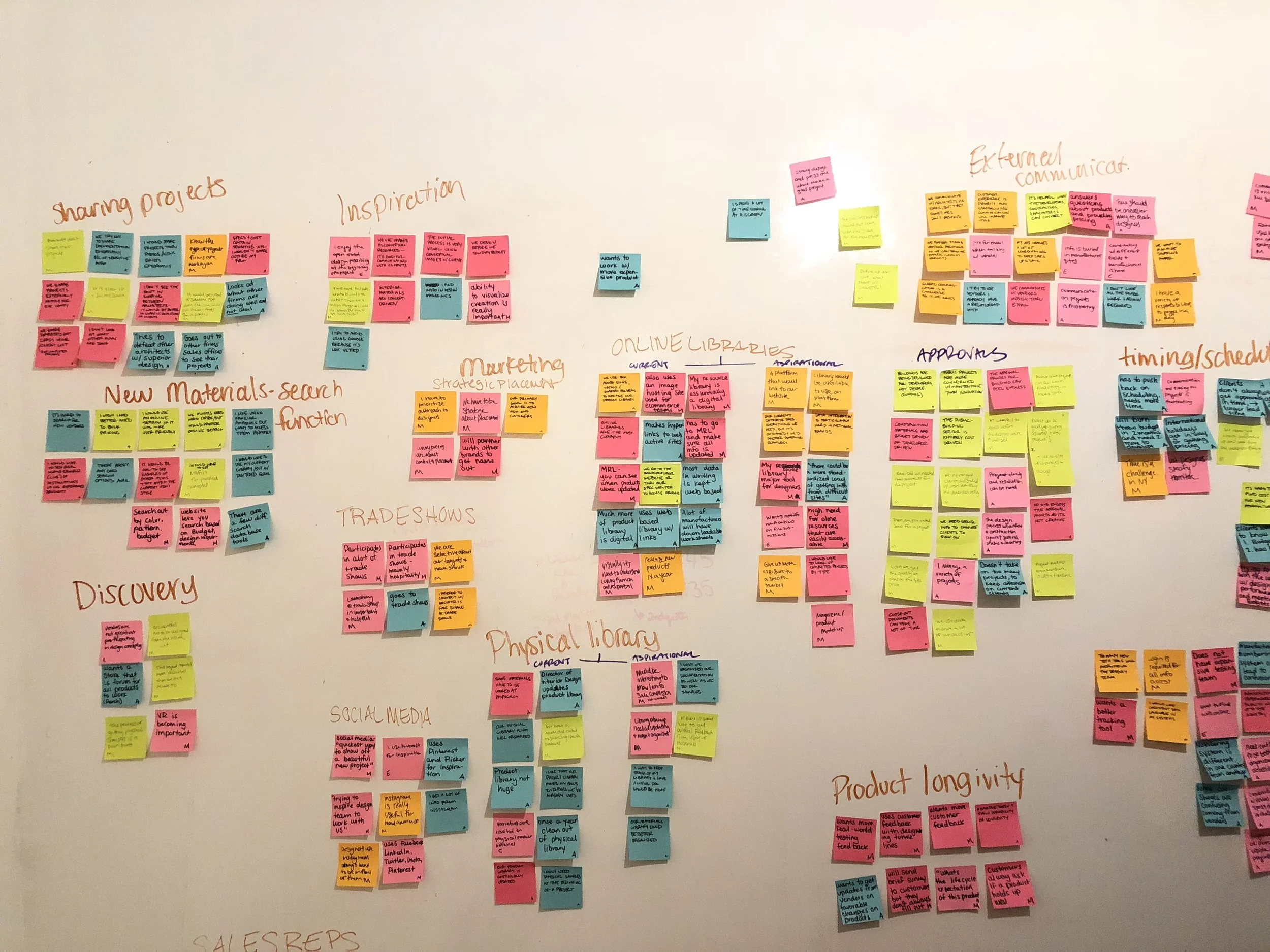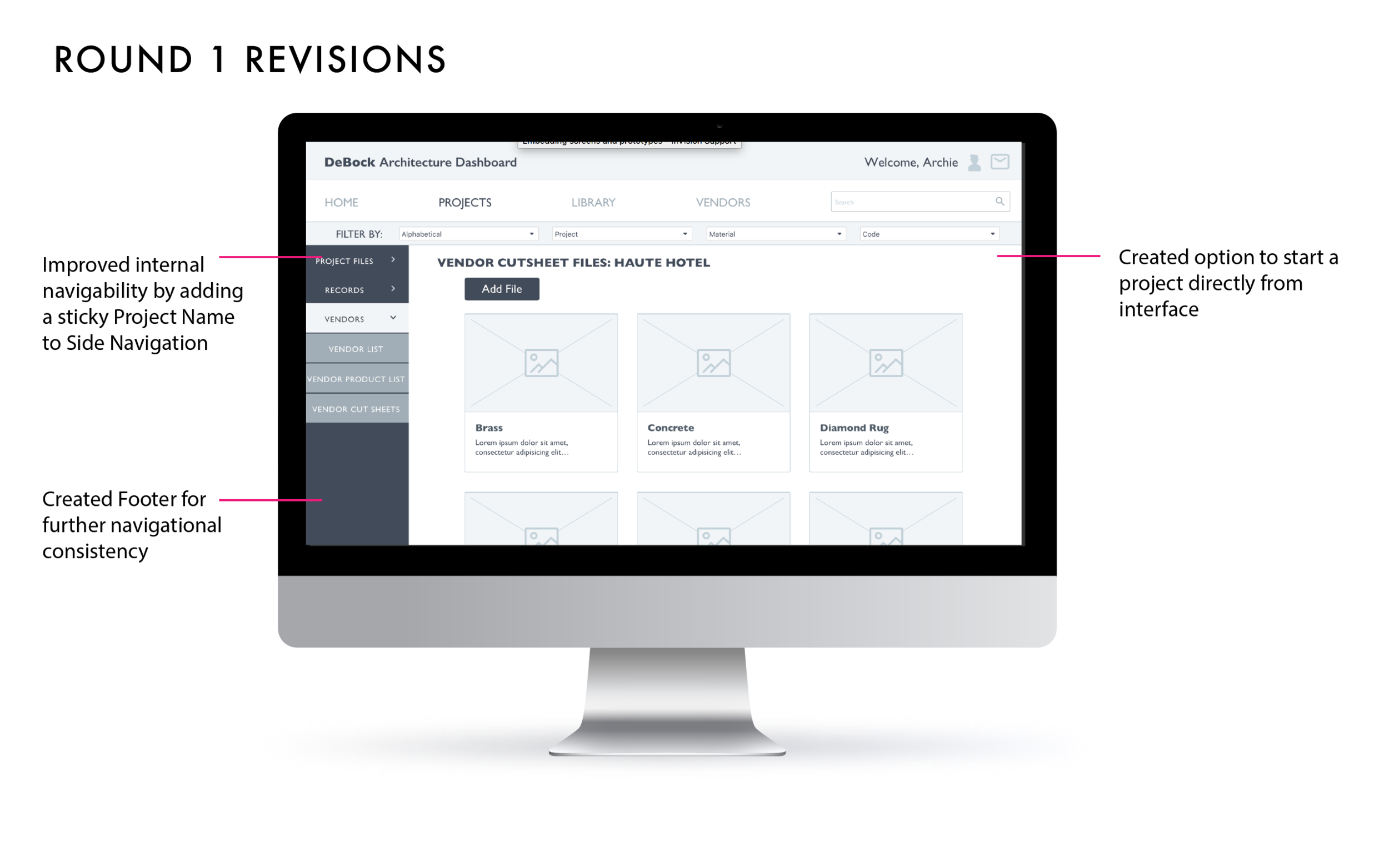
Project Overview:
Auufa identified a serious need in the architecture industry - aiming to streamline communication, and foster collaboration between architects and manufacturers. This phase is the first step in a larger vision to create a central platform for architects to store and utilize information, helping them achieve their goals faster and with greater job satisfaction.
Our challenge as UX Designers was to identify insights and pain points, and determine what features would be crucial to a minimum viable product (MVP) that would get buy-in from the overarching industry.
Observation
The lack of standardization and open communication in the architecture industry leads to inefficiency and wasted time, which ultimately decreases productivity and job satisfaction for architects.
Objective
Design a platform to streamline communication and foster collaboration, reducing time spent on repetitive administrative tasks and allowing more room for the creative process.
DESIGN PROCESS:
01 Research and Discovery
We conducted interviews to identify pain points in our users’ journeys. What do our users currently do, and what do they need?
03 Testing and Analysis
Do our users behave the way we expect them to?We analyzed this through rounds of usability tests, including challenging our users to accomplish certain tasks as well as testing the logic of the navigational structure.
02 Define and Design
What can we accomplish within the constraints of time, budget, and what is the industry open to? How do we make something that people will actually want to use?
04 Further Iterations
How can we improve the user experience while keeping in mind our original goal?
01 - User Research Interviews
This project was approached first with in-depth user research and analysis. We conducted interviews with both architects and manufacturers, to better understand how they communicate in the industry. This allowed us to identify key flows and pain points of the current process. Users were identified by Auufa, with additional users collected through social networks and snowball recruiting. All interviewees were confirmed to be professional architects or relevant product manufacturers, with significant professional experience in the field. Data was captured via manual notes, as well as audio recordings which were later transcribed. Interviews lasted 30-40 minutes per session.
6 ARCHITECTS
5 in-person sessions
1 recorded phone call
5 MANUFACTURERS
1 in-person sessions
4 recorded phone call
Competitive Analysis
Platforms for manufacturers and architects are prevalent online. We researched a number including Archetonic, Archetizer, Sweets, and Eporta. We heard a lot inconsistency around usage and actual functionality for the industry in our research interviews. Manufacturers often weren’t seeing a high enough value or sales increase and architects often didn’t have time or felt like they were sold to or pushed a product rather than useful discovery.
““I think that there are a lot of online platforms for different things. And we just don’t have time to use them. So if there was a more user friendly option, I could see it being very helpful.””
OVERVIEW:
Deliverables
InVision Prototype
Research Report
Team:
Cora Books
Sydney DeBolt
Faith McCormick
Timeline:
2 week
My Role:
UX Researcher
UX Designer
Scrum Master
DATA SYNTHESIS

AFFINITY MAPPING
Transcripts of each interview were analyzed for relevant observations, pain points, and thematic trends. These insights informed our original design decisions, and laid the foundation for the remaining stages of the project.
KEY TAKEAWAYS AND PIVOTS
INSPIRATION
Architects use images of other works for their own inspiration
CONTROL
They are open to sharing certain aspects of a project, but want control over how and what is sharedCOLLABORATION
Past experience as well as insights from colleagues informs project decisions.
There is a real need for both filing documentation and sharing within firms, but there needs to be a clear boundary between what is shared internally vs. externally.
We realized the project needed to pivot from solely an external portfolio sharing platform to an internal project collaboration process.Originally we had expected to begin designing a portfolio-based sharing platform, through which architects could upload their work and use the site for learning and inspiration. However, established architects weren’t interested or willing in sharing their information.
Architects want collaboration internally and inspiration externally.
Refined Problem Statement
Most established architects want to efficiently store and access projects within their firm, but would not share their work publicly due to privacy concerns.
How might we create a network for architects and designers to use internally, without potentially exposing proprietary information?
DEFINE AND DESIGN

Features
Due to the time constraint of the project we had to us to prioritize and limit the features to what was needed to make the minimum viable product (MVP). Using the MoSCoW method, we decided which features Must, Should, Could, and Wouldn’t be part of this scope. For this sprint we were focusing on the Must Haves. Using the insights from our interviews, we brainstormed which features would be most likely to appeal to initial users, established architects and designers at architecture firms
Project Name & Identifying Details
Any usable database must have identifying information for organization and discoverySpec Library
These documents allow users to collaborate and build/reference a project digitallyMaterials Library
A major pain point of the industry is the lack of a cohesive digital materials library. Enabling users to input product and materials information as they go allows the library to grow organically, but also with intention. Future design sprints will enhance this functionality
From the very beginning, our design process
had three clear objectives in mind.
01 Useful to the industry
Does the app actually solve what we want it to?
02 Easy to understand
Can a user quickly figure out what to do and how, without excessive prompts?
03 Enjoyable to use
Is the experience seamless and fluid, giving the user direction and affirmation that they are properly reaching their goals?
USABILITY TESTING
We did 3 rounds of usability testing as well closed card sorting and tree testing to refine the navigation and flow of the site. Below are some the revisions and iterations made during the process.













